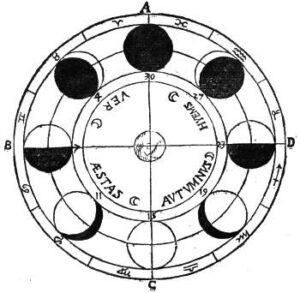I’d first like to thank you for reading my first post, and welcome you to my view point.
You don’t have seven chakras.
There are not a mere seven gates in your body. The Chinese understood this more so than any other archival culture (Celts may have known, and Tribal peoples definitely know). They use the term “Meridian”. Defined, A meridian: is any point where body and spirit meet. You will read many occult texts using your body as a gateway to any number of planes. Witches called it “taking flight”, Ásatrú named it “climbing the world tree”, and so forth. Christianity even says, in two separate phrases “Your body is the temple of the holy spirit” and “The kingdom of heaven lies withing man”, albeit you can interpret them a number of ways, this is ominously befitting a gateway between a higher power and yourself. Even the Kabbalah says “there are a thousand ways to enlightenment”. Back to identifing a single spiritual gate, say the idea, intention, or emotion linked with it. Such as “Chakra of Grounding” or “Meridian of Contention”. Terms can be easily used in place of each other, but remember, there are innumerable branches of spirituality, and, therefore, numerous names.
A Mudra is a physical movement with a chant for a metaphysical benefit. Hindis most understood this with their hand-signs for intentions. These intentions focus on unity, strength, empowerment, not a single negative aspect. Most people don’t like to feel enraged. This is why mudras, an spiritual opening to the world through the body, is such a great way to empower yourself. (I think a common mudra most people have done is to kneel and put your hands together for prayer.) The phrase “Just dance” lingers for a reason.
However, they revered gods, such as Shiva the Destroyer. They used mantras, which are ideas and chants, to revere the god. Or, to take on an aspect of the god, in religions such as voudoun or in shamanism. This is the grasp of a negative aspect. You cannot let severe negativity within yourself without a severe negative effect. (I think a common mantra most people have done is a blessing for food, or in a mass.) This leads us into both mudras and mantras in action.
Tantras are ideas, or intentions with motions. It is very ritualized. Mudras and Mantras occur before or during Tantras. Tantras will be repeated as necessary, until an idea is brought through, an effect. Think of Tantras as rites, Mantras as prayers, and Mudras as significant signs. (Think of a tantra as a mass, sermon, or otherwise religious gathering for spiritual gifts.)
However,
You will never be able to discern a tantra, mudra, mantra, unless you can identify the gods or godesses (or even yourself aspects) associated with the ritual.
Quick Source:
http://en.wikipedia.org/wiki/Mudra
http://en.wikipedia.org/wiki/Tantra
http://en.wikipedia.org/wiki/Mantra
http://en.wikipedia.org/wiki/Meridian_(Chinese_medicine)


o.o i remember reading this on the forums :) it is what lead me to mudras and mantras :)